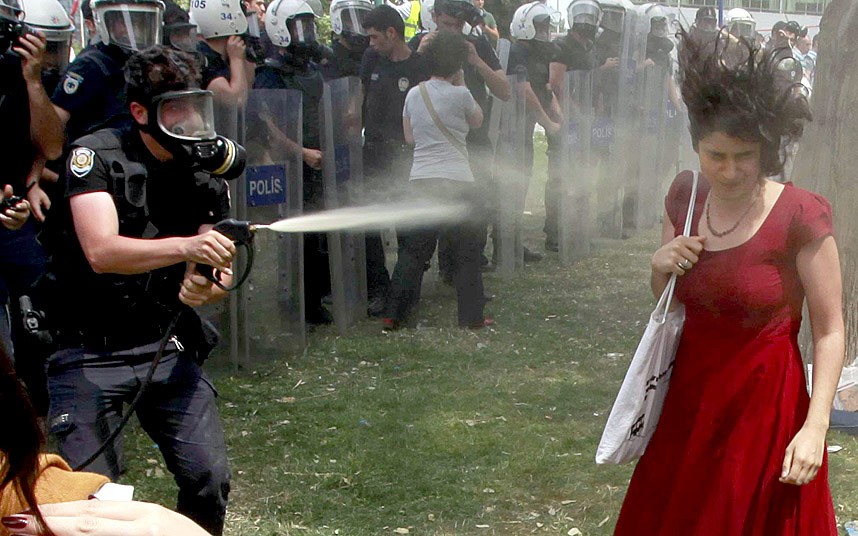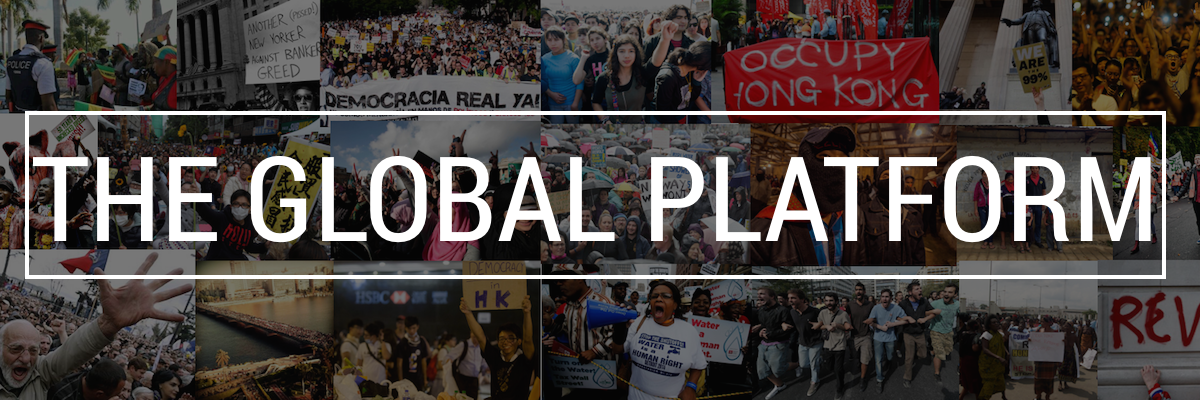Building a Truly Global Platform
This blog post comes on the Fourth Anniversary of Occupy Wall Street and the launch of The Global Platform, a collaborative project I directed with Occupy activists, German political foundation Freidrich Ebert Stiftung and boutique data visualization agency Two-N.
We are ies living a unique moment for humanity. The future of democracy and self-governance will be decided in our generation.
In early June of 2013, the world was blanketed with a thick and righteous indignation. I sat in a small flat in Paris, shifting my lazy gaze from the Eiffel Tower outside my window to the flurry of images cascading down my laptop’s Twitter feed like a waterfall of revolt. What had begun as a trickle of political slogans a few years ago had slowly transformed into a mighty river of online dissent, its rapids busting through the damns of conventional political representation.
I had come to Paris that summer by invitation of the Organization for Economic Cooperation and Development (OECD), one of the world’s largest non-governmental organization created by the Marshall Plan in the rebuilding period after World War II. Today, however, the OECD struggles with the growing legitimacy crisis confronting governments around the world in the aftermath of the 2008 global financial crisis. I had been asked to represent Occupy Wall Street, one such movement that erupted in September 2011 in a small park in New York City. I would be speaking to world business and civic leaders about how social media could make government more responsive to its constituents. Given the political tumult surround them, leaders seemed eager to listen.
My gaze drifted back onto the computer screen. A thousand miles away, in a small park in Istanbul, Turkey government forces had raided a small protest camp of environmentalist activists protecting trees from bulldozers. A beautiful woman in a flowing red dress was pepper-sprayed at close distance by a police officer in riot gear. The tweets rippled out from Gezi Park and picked up speed as they ricocheted across the corners of the Internet.

The next day I found myself standing in the multitude of #DirenGezi (roughly translated to #OccupyGezi! or Resist Gezi!). It was a diverse assemblage that, like other occupation protests I have visited, reflected a growing trend of globe-trotting social activists ready to pop up at a moment’s notice wherever people perceived their undemocratic government to be failing them. I had come not to take up arms — which in Gezi really meant bandanas, Guy Fawkes masks sold on the street by local vendors, and milky homemade anti-tear gas concoctions — but rather to observe and document the birth and growth of a 21st-century protest movement. What I saw truly shocked me.
Global protest has become deeply interconnected. Youtube videos recorded by anti-austerity protesters in the streets of Greece are uploaded and streamed by young radicals in the back alleys of Istanbul. They show bandana-masked people in gardening gloves retrieving police tear gas canisters and defusing them in buckets of water set down at door-fronts by high-rise apartment neighbors in a kind of symbiotic act: residents don’t want tear gas smoke wafting into their homes, a desire that puts them into tentative alliance with street protesters against the government’s police.
It isn’t just street protest tactics that are shared instantaneously, but entirely new forms of governance that challenge institutional power at the ground level. A guidebook on peaceful non-violent resistance from Occupy Hong Kong inspires youth in Santiago, Chile and Newark, New Jersey. This is an unexpected outcome of globalization: the same technologies developed for global military power and corporate hegemony have been re-appropriated and reverse engineered for global solidarity movements.
We are living in an era defined by two seemingly-contradictory trends: (1) the rise of technologies that facilitated instantaneous, universal communication across geography, race, class, and nationality, and (2) a steady erosion and decline of the democratic ideals of self-governance and the rule of law in the face of the growing power of unaccountable political elites and international finance capital. This is the defining crisis of our time — the future of democracy itself hangs in the balance.
The frequency of global protest has increased steadily since 2008. The ‘World Protests’ study, from which The Global Platform is born, revealed that the most common demands are: real democracy (meaningful political participation), economic justice, and human (and environmental) rights. Much more than a random cacophony of voices, these demands are co-mingling and co-evolving with each other as global social movements connect on the Internet.
I believe this growing call for change shouldn’t be ignored. I believe that elected officials, civil and business leaders, public intellectuals, social activists, and all concerned citizens will benefit from a sharp look at what is transpiring across the globe today.
This is the global platform. I hope you you’ll explore it with us.


